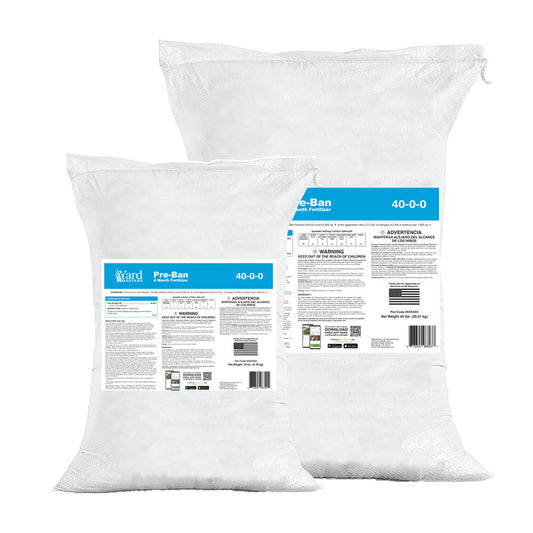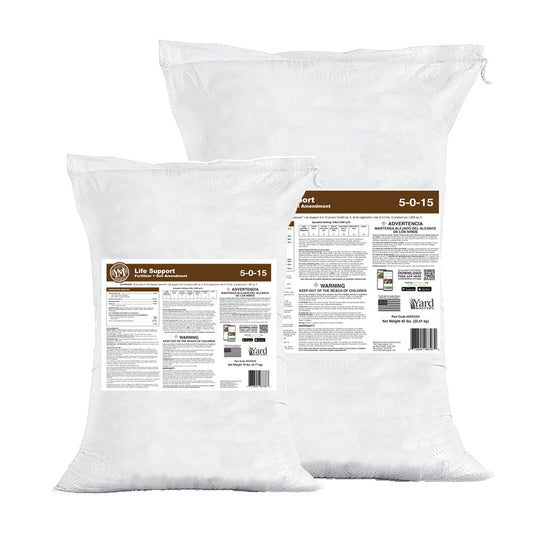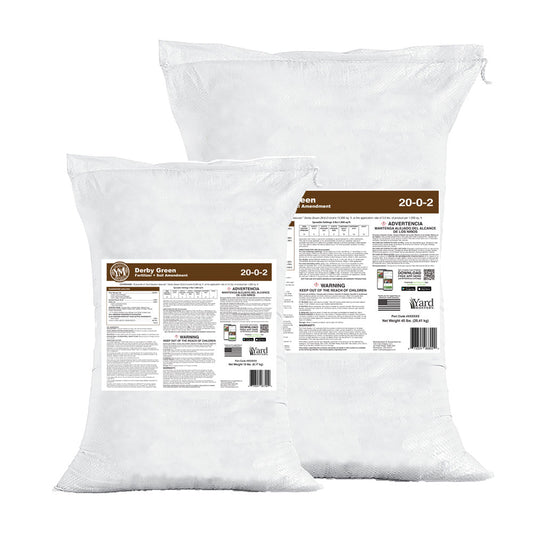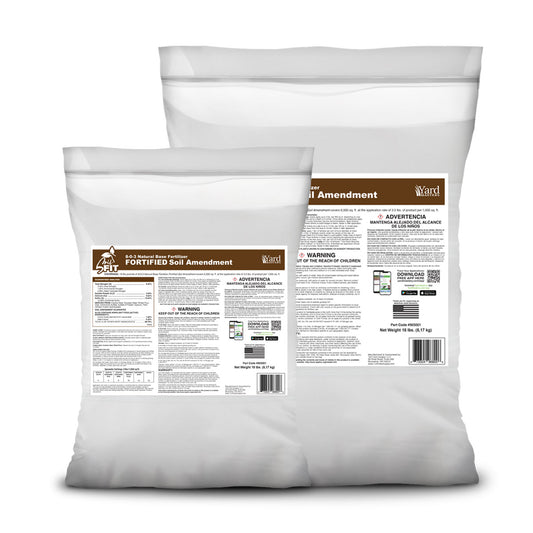Hey there Lawn Care Nut!
I know we are still in winter and your lawn is under snow and ice, so I made some content that I hope will brighten your day and get you thinking about the sunny days and blue skies ahead.
In fact, do you know that the first official day of Spring is Thursday, March 19? That’s 39 days away give or take a leap year day in there somewhere.

So check this out: I made a fairly long video this week - full of tips - and I broke it all down for you in this email so you can digest the parts that are most interesting to you.
Think of this as “show notes” with commentary about the video I just produced.
The cool thing about it is that there is something here for everyone and if you watch the entire thing from start to finish, you’ll pick it up and be a stronger Lawn Care Nut heading into the 2020 season.
So with that, let’s get after it:
For those who like a longer video that gives you more than just the tip and incorporates some good music along the way, the full version of this week’s video here:
The Breakdown
0:50 Foxtail Palms Quick Maintenance
Starting out, I do some light maintenance on my FoxTail Palms. I’ve had these in the ground for 3+ years now and they are doing well. Here I give some super basic tips on helping along with the fronds that don’t want to fall off on their own.
These also do tend to get mealybug and scale on them that have caused damage in the past (you can see it in the video).
Originally I was using Neem Oil to control them and it was working fine but someone in the comments of a video a few weeks ago told me that certain plants are sensitive to Neem and that I may want to switch to something more benign.
So I am now using a general mineral oil horticultural oil to control scale insects in my palms across the property. It seems to be working just fine.
The way these oils work is they coat the insect and suffocate it. Most of them are also registered as safe for organic gardening which is another positive aspect to using these softer controls for common landscape pests like scale.
2:58 Large Patch / Brown Patch Disease Update
I made a video a few weeks back showing some large patch (Rhizoctonia) that had invaded a couple of spots in my Palmetto St Augustinegrass.
At that time I went ahead and employed my “bulletproof” disease strategy which incorporates 2 fungicides with different active ingredients. Both products are easily found at any HD, Lowes or Ace.
You can see that my lawn has pretty much recovered. I have been continuing to feed in nutrients including nitrogen.
One of the misconceptions about brown patch and large patch disease is that they are caused by excessive nitrogen. This is not true but is based on truth.
The disease can be accelerated by an overabundance of nitrogen but that doesn’t mean N causes it, and it doesn’t mean you should cut off the N when it is present. Just back it down, and play it slow and smart.
Keep feeding but back down the N to less than 3/4 lb/N/1,000 sq ft. Get micros and humic acid in there too!
Ever heard the saying “you have to feed a cold?”
The reason that statement is true is that even though you don’t feel like eating because of the post nasal drip making your stomach sour, you need to keep your strength up so your body can fight off the virus. This is also why you drink Gatorade when you’re sick - to replenish those minerals and electrolytes!
Same with the lawn. It needs to be able to grab sunlight and convert it to sugars for energy so it can regenerate and regrow from the damage. It needs minerals and bio-stimulants along with whatever medicine (fungicide) you choose.
This is especially true with grass types that creep and crawl across the dirt via rhizome and stolon.
Just because one end of the stolon is damaged, the other end can continue sending nutrients and energy out to the front lines to regrow daughter plants quick! And this is what happened in my lawn.
Note: here is a clip of a lawn that has the disease and has not been treated - the disease has stopped from the cold but the lawn has not repaired itself yet.
You cool-season folks with turf-type tall fescue - you guys up in the Carolinas and across the transition zone.
When the summer heat and humidity start to come up in June and that brown patch begins to set in (same pathogen as in my lawn right now), don’t cut off the N totally, just back it down, slow and low.
Nutrients and bio-stimulants, push in the fungicides, catch your clippings, create airflow if you can (trim trees) and as always, hope for the best!
4:09 TasselFlower Weed In My Lawn
I figured this was mostly just a South Florida weed but I had a guy in comments say he has it up as far north as Jacksonville. Too bad it’s a weed, it really does have a unique looking flower.

4:41 ALL My Tips Are Red!
This is really the start of the crux of the entire video. The premise is “this is why my lawn is so soft and thick.”
Now you have to understand (and I illustrated in the vid) St Augustinegrass is NOT known as a good barefoot grass.
It’s known to be more crispitty and crunchitty.
So much so that I hear northerners vacationing here say oftentimes “your grass feels like crabgrass!”
And to be honest, that hurts my feelings. My grass feels nothing like crabgrass.
In fact, my lawn is much more durable than any pale green annual weakling weed like crabgrass could ever hope to be!
My grass is big-boned and thick bladed and lives for YEARS. Unlike crabgrass which is more like a fighter who doesn’t do cardio. 1 fast hard round and it’s over.
Joking aside, my St Aug really is pretty soft underfoot. Just look at my feet sinking into the Palmetto St Augustinegrass here - like a giant feather pillow.

How To Make Any Grass Softer Under Bare Feet
So let’s go back a bit - back to the 4:41 mark where all my tips are red.
That is Provista St Augustinegrass and it’s red because it was zapped by the cold. St Augustinegrass doesn’t take well to temps under 40F and we got pretty close there for a couple of nights last week.
That area has also gotten no fertilizer since back before the fert ban of 2019. I just ignored it and you can see it suffered.
Now, it won’t be long term and everything will be fine but it still illustrates the point that a lawn that has a good nutrient load can withstand these pressures and keep in shape in spite of them.
And that is what you see on the Provista in the front yard.
Even the Floratam is decently soft right now.
Now contrast this to the crunchy and crispy stolons you see in this clip right here from my neighborhood walk and talk.
The difference is those crispy crunchy stolons don’t have the same nutrient load and overall care that my lawn does.
They have had to live a harder life, crawling out into the streets alone - and it’s made them hard. Hard to walk on.
13:06 Is This Disease Or Something Else?
It looks a lot like disease spots when you roll up on it, but this area here is actually signalgrass patches that were damaged from cold weather. It just goes to show that not all brown spots are created equally.
Finally, here is the beginning of my Lawn Care Life recap.
I have spoken in this conference the last two years and had a blast hanging out with the lawn professionals who do this work for a living every day. Hard charges, every one of them!
If you want to get a listen of the podcast segment I did with Keith Kalfas and Paul Jamison, the episode is right here.
Announcement:
We are restocking the warehouses now. Prodiamine and dithiopyr pre-emergent will be available within days.
Fresh batches of the Carbon Earth products will be arriving shortly after and will all have the CRRP Technology built in just like the pro stuff. In fact, we will carry all the Carbon Earth products this year.
The stuff in our bags will be identical to the stuff the pros get, just in different bags.
We will also be making available smaller bags for DIY as well as updating spreaders' settings for the most common DIY spreaders.
Stay tuned!
-AL







